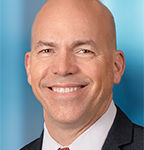By Michael Greenberg and Wylie Tollette
(Sponsor Content)
The 60% stocks and 40% bond (60/40) balanced portfolio ― or 70/30 depending on your risk tolerance and time horizon ― has helped many investors build wealth over the past 20 years. It’s a simple recipe for success that has relied on four basic market expectations:
1.) Positive longer-term returns for stocks, driven by underlying economic growth
2.) Falling ― but still positive ― yields on bonds, particularly sovereign bonds
3.) Low and contained inflation
4.) Negative correlations between stocks and bonds (move in opposite directions), particularly during recessions
This last expectation has been especially important. When equity markets are under stress, central banks traditionally have been able to reduce short-term interest rates, increasing the value of nominal bonds. Investor flight to safe-haven assets and quantitative easing (QE) programs initiated by central banks also provide a price boost to the asset class. This helps offset the decline in equities and provides portfolio managers with “dry powder” to reinvest in newly cheap stocks.
But the world has changed. With sovereign bond yields approaching zero in many countries, does this basic equation still hold?
Four Strong (Head)Winds
Today, the 60/40 portfolio faces four formidable headwinds:
- Low bond yields – for the past 35 years, yields have fallen and stayed near historic lows. Investors have offset those declines by increasing equity risk; but in a balanced portfolio, more risk means more volatility.
- Reduced negative correlation impact – with such low yields, the sought-after negative correlation between bonds and stocks may diminish.
- Waning disinflation –increasing pressures on inflation from aggressive monetary and fiscal stimulus, increased protectionism/nationalism, and supply chain disruption/re-shoring could lead to higher yields, which would hurt bond prices.
- Limited monetary tools — near-zero/negative interest rates and bloated balance sheets mean less ammunition for central banks to fight the next economic downturn. A move to heavier fiscal policy and resulting increased government bond issuance would also hurt bond prices.
The Real Price of Risk
At this point, taking on more risk may not be worth the incremental return. If your cash flow is negative, you won’t be able to rely on equity risk to carry the load. To fund those cash flows, you would need to sell securities periodically, which introduces timing risk. At the worst, you could be forced to sell a long-term asset during a bad short-term stretch in the markets.
Evolve, don’t abandon
Do these changing conditions mean the trusty 60/40 portfolio should be completely scrapped? We don’t think so. Here are some ways to bring your balanced portfolio up to speed:
- Adjust your return expectations. Yes, the contribution to returns from bonds will be much lower. On the other hand, we think there is likely a cap on how far and fast yields could rise. That will limit the downside. We suggest a long-term return of 4-5% is a reasonable expectation for a 60/40 portfolio (excluding potential value add from dynamic asset allocation and active security selection).
. - Allocate bond exposures wisely. As yields rise, so does the cost to hold government bonds ― but you also start to build in extra downside protection. Some government bonds offer higher yields and steeper curves, providing better diversification to equities. It pays to be selective where you take your bond exposure.
- Consider adding some alternative assets. Gold, inflation-protection securities, alternatives, equity style factors, and certain foreign currency pairs are all effective complements to government bonds.
- Get professional advice. Working with a financial advisor can help maximize portfolio ending values by avoiding certain behavioural biases and poor decision-making. Similarly, guidance from an advisor can maximize portfolio values by making general financial planning, tax,insurance, will and estate planning more efficient.
-
Integrate professional managed multi-asset solutions. Investing in a professionally managed multi-asset solution can help you navigate rapid changes in the investment landscape. It’s important to find the proper “fit” for your circumstances. Multi-asset strategies can be used as:
- one part of a broadly diversified portfolio
- a core holding in a core/satellite approach
- alone as a complete portfolio (single delegation model)
60/40 Still Has Legs
For many medium-to longer-term investors, we believe the 60/40 (or other multi-asset portfolios of varying asset mix depending on your risk tolerance) remains a very viable option. But to make it work in today’s increasingly complex investment environment, it will need to incorporate best practices and evolve from the status quo. If you already own a balanced portfolio, make sure it’s still serving you well in a changing world.
Michael Greenberg is a vice president, portfolio manager for Franklin Templeton Investment Solutions. He is a member of the FTIS Investment Strategy & Research Committee specializing in fixed income strategy and has co-portfolio management responsibilities for all Canada-based managed programs, including Franklin Quotential and Franklin LifeSmart. He also manages institutional mandates in North America and Asia. He joined Franklin Templeton Investments in 2006 and has 15 years of experience in the financial services industry and holds a bachelor of commerce degree from the University of Ottawa. He is a Chartered Financial Analyst (CFA) charterholder and a Chartered Alternative Investment Analyst (CAIA) charterholder.
Wylie Tollette, CFA, CPA is executive vice president and head of client investment solutions for Franklin Templeton Investment Solutions. His key responsibilities include oversight of client investment solution development and the portfolio management teams for the multi-asset platform. Prior to rejoining Franklin Templeton, Mr. Tollette served as chief operating investment officer at CalPERS, the largest defined-benefit public pension fund in the US. He was also responsible for investment performance and risk analytics, investment policy, investment manager engagement, operations, compliance, and business planning. Prior to his time at CalPERS, Mr. Tollette worked at Franklin Templeton for almost 20 years, including as the head of the Performance Analysis and Investment Risk team. He received a BS from the University of California, Davis and a Master of Science in Finance from the University of London. He is a Chartered Financial Analyst (CFA), a member of the CFA Association of Sacramento and San Francisco, and also holds a CPA designation.
This commentary is for informational purposes only and reflects the analysis and opinions of the Franklin Templeton Multi-Asset Solutions (FTMAS) investment team as of October 14, 2020. Because market and economic conditions are subject to rapid change, the analysis and opinions provided may change without notice. The commentary does not provide a complete analysis of every material fact regarding any country, market, industry or security. An assessment of a particular country, market, security, investment or strategy is not intended as an investment recommendation nor does it constitute investment advice. Statements of fact are from sources considered reliable, but no representation or warranty is made as to their completeness or accuracy. Commissions, trailing commissions, management fees and expenses all may be associated with mutual fund investments. Please read the prospectus or fund facts document before investing. Mutual funds are not guaranteed, their values change frequently, and past performance may not be repeated.




